Pressure from the government for us all to change our ways and adopt electric cars is growing. In the US, the federal government hasn’t taken the drastic steps that countries like the UK and other European nations have taken in setting a deadline, but some states have expressed their desire to achieve the same goals within the same timeframe. In short, this means eliminating the sale of new gasoline cars from 2030 onwards, and hybrids from about 2035, and making electric cars the dominant vehicle type on our roads by 2040.
All of this is forcing people to really start taking EVs (Electric Vehicles) seriously, and that’s causing a number of headaches. Chiefly, people are worried and concerned about how long they’ll be able to drive their electric vehicle before it runs out of electric juice. They’ve grown so used to reading their dashboard gas meter to see how full the tank is, but how does it all work on an electric car?
In today’s blog, we want to provide a guide for those who are worried about making the change for these reasons, and to answer some of the most pressing questions they have regarding the range and battery life of electric cars.
How Many Hours Can You Drive an Electric Car?

Let’s start with the core question of today’s blog. This might seem obvious to some who have looked closely at electric cars or who have already purchased one. Every OEM (Original Equipment Manufacturer) out there state the “range” of their vehicle quite visibly within the vehicle information or advertising, because it is a question that so many people want to know.
When you see an EV advertised, the “range” they are referring to is the approximate maximum numbers of miles one should expect to be able to drive on a single charge of the battery. A “single charge” is defined as the battery discharging fully from 100 percent down to zero. The average range of an electric car at the time of writing is about 200 miles or so, but there are many models that fall either side of that, some offering a lot more range (and very used Leafs tending to offer a lot less!).
The trouble is, not everyone thinks of their daily driving in terms of miles, but more likely in terms of time. We know how long we are on the road each day or week, but couldn’t necessarily tell someone in an instant how many miles we cover in one of those days or weeks. So, let’s consider first how to translate “range” into a unit of time, such as hours.
Translation: Range Miles to Hours of Driving

The bad news is that there’s no exact science at work when predicting how many hours one could keep an EV going on the road, but available data does give us some good ideas and a rule of thumb.
Information from Nissan and Tesla models show that 150 miles range is about the equivalent of 8 hours of driving time on the road. On the surface, that doesn’t seem to make a lot of sense, since most of us would never imagine driving 150 miles and it taking 8 hours. Well, let us explain in a bit more detail.
First, let’s look at the Nissan Leaf. According to official Nissan sources talking about the battery specifications of the Leaf:
“This battery stands out and is more advanced than what you’ll find in similar models because it has one of the quickest charging times. It can charge up to 80 percent in just 40 minutes. You can enjoy up to eight hours or 150 miles of driving when it’s 80 percent [charged].”
Nissan Leaf battery specs
These numbers seem to line up with another story reported in The Denver Post. The piece was asking, “How far can a Tesla really drive on one charge?” and told the story of Erik Strait and Sean Mitchell who set out to test it, attempting to cover 600 miles on a single charge of the battery.
Sean Mitchell posted on Twitter on May 27, 2018 with the results, declaring:
“Final #Model3 hypermile numbers from @teslainventory and I: 606.2 miles, 66kWh, and 110 wh/mi, and 32 hours of driving…”
Sean Mitchell, Twitter, 27th May 2018
As you can see, our 150 miles to each 8 hours of driving seems to add up well into the Tesla example, too, where 4 times as many miles yielded 4 times as many hours of driving.
Hours Of Driving – For Various Popular Models
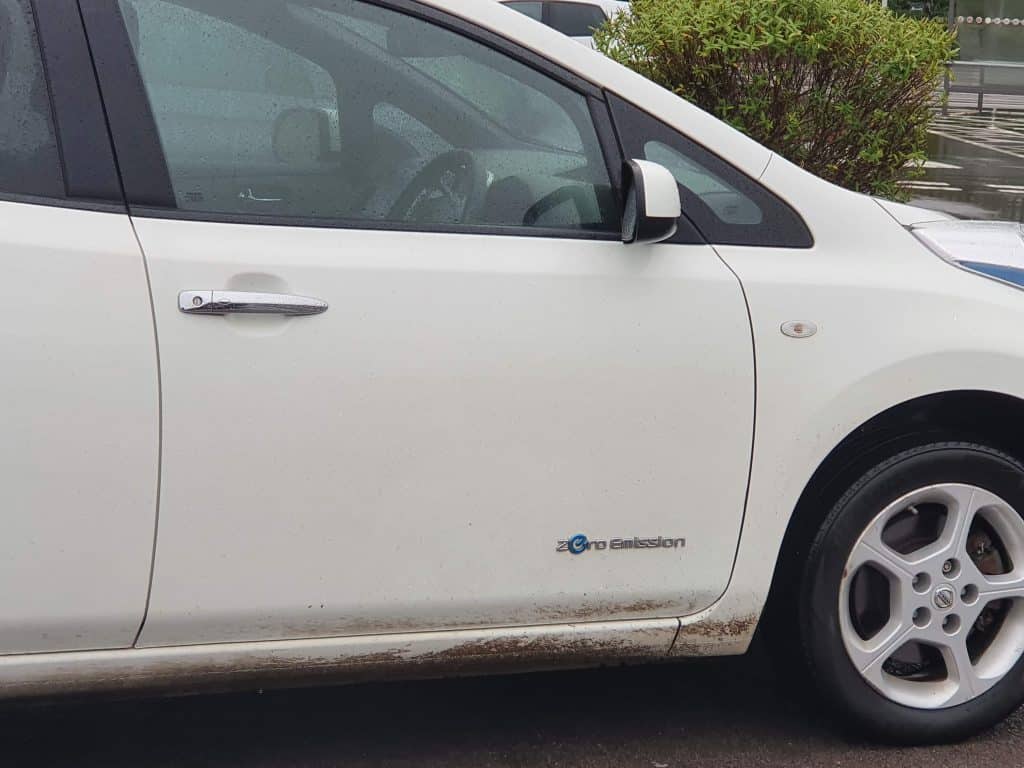
Here’s how we can understand the range of many popular electric models based on this rule of thumb:
| Make/Model | Range (miles) | No. of Hours’ Driving |
| Tesla Model X | 348 | 18.5 |
| Tesla Model Y | 330 | 17.6 |
| Chevrolet Bolt | 259 | 13.8 |
| Nissan Leaf | 226 | 12 |
| Mustang Mach-E | 314 | 16.7 |
| VW ID.4 | 280 | 14.9 |
| Audi e-tron | 222 | 11.8 |
| Porsche Taycan | 225 | 12 |
| Hyundai Kona | 258 | 13.7 |
What Is Draining the Battery Power in an Electric Car?
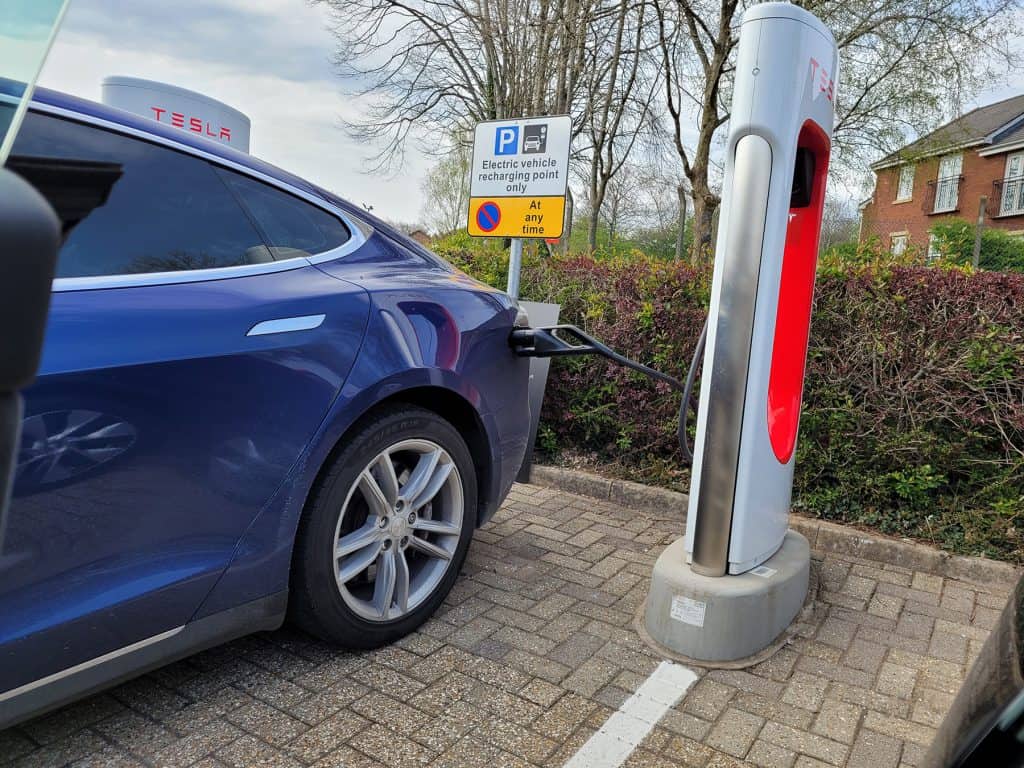
So, we have established a basic rule of thumb for how many hours an electric car battery can last. The problem is that we also know that the cars traveling at those rates were always at constant speeds between 25 and 35 mph, and the testing is typically done in a “loop” test, meaning the drivers picked a route and went around that route repeatedly, as opposed to just driving here, there, and everywhere.
It’s important, therefore, to cover what other factors come into play when determining how fast an EV battery drains. Below are several examples:
Speed

Put simply, the faster you’re going the more of the battery you’re going to drain. The examples we gave above where drivers were getting 8-32 hours of driving were based on consistently slow speeds of 25-35 mph, but as we know that’s the reality most of us live. We may drive on the highway every day as part of our commute, for example, meaning we have regular protracted periods of driving at 50-70 mph.
Driving Style
The more aggressive your driving style, the more likely you are to drain the battery faster. For instance, if you set off from a stand-still with an aggressive push of the gas pedal, and drive at higher speeds when cornering and until the last safe moment comes before you brake, then you’re going to wear the battery faster, just as you would with a regular engine.
Electronics and Gadgetry
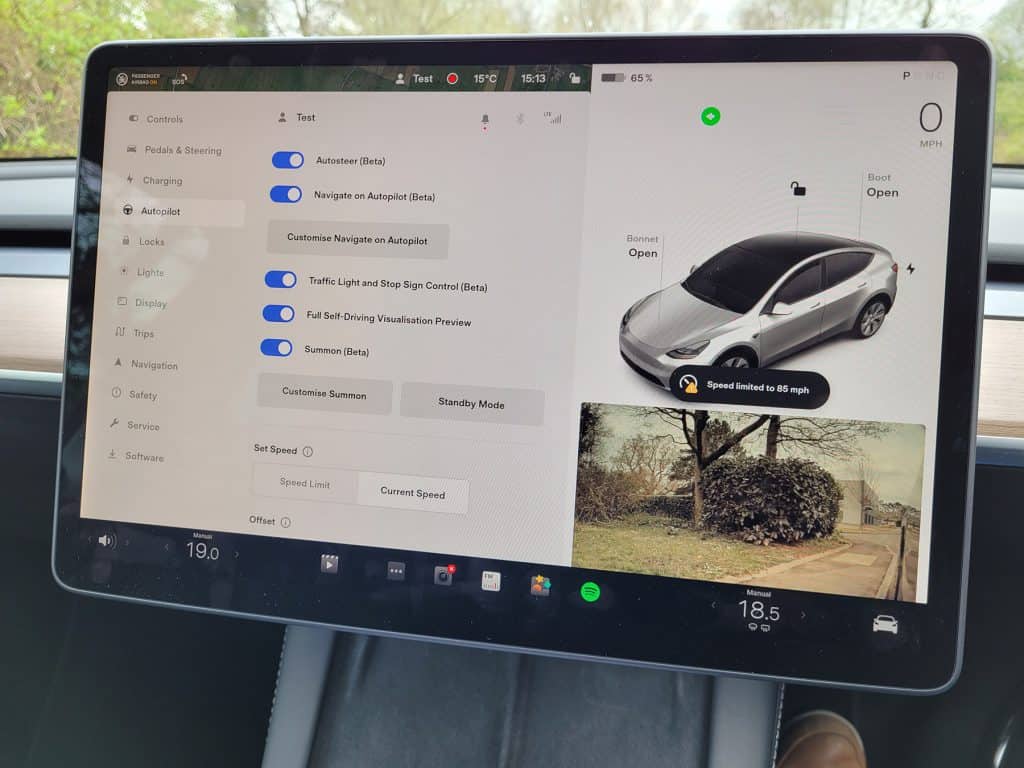
Companies like Tesla make a big point of marketing their advanced features on their electric cars. Tesla cars with Autopilot, Full Self-Driving, Sentinel Mode, and so on, all add greater strain to the battery as they power sensors, screens, alarms, and more. The more gadgetry you’re using on the car, the faster the battery will go down.
Heating/Cooling
While some electric cars are now receiving energy-saving heat pump systems, the majority of them still use resistance heaters in the absence of a rumbling engine in the front to provide heat for the car.
These are not so energy efficient, and can be quite a drain if you’re using them a lot, especially as the cold weather outside has its own impact (see below). When you throw in air conditioning, heated seats, heated steering wheels, etc…it takes its toll on the battery.
Outside Temperature
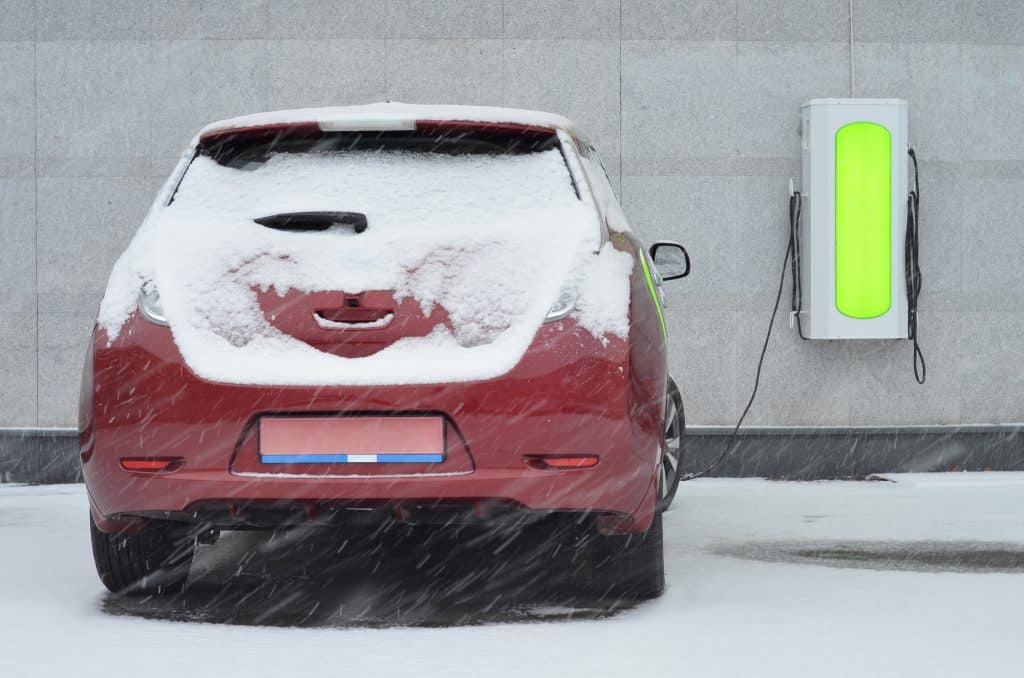
Heating can be a particular strain when the cold weather is already having some impact on the main battery capacity. It has long been a problem that the cold negatively impacts battery chemistry and inevitably shortens its operating life while the temperature remains that way. The effects aren’t permanent, but range is invariably reduced by cold outside temperatures.
Parasitic Loss
This phenomenon is sometimes also referred to as “vampiric” drain and refers to the way you lose power (and therefore range) simply by leaving your electric car idle and doing nothing. Just as your smartphone will eventually drain even if you don’t use it, so too will your electric car, about 1-2 percent a day on average.
Regenerative Braking
Finally, the use of regenerative braking can actually positively impact your car’s range, channeling additional power back into the battery and keeping your car going for longer. However, as things stand and with technology at its current level, the gains made from regen braking are not meaningful enough to stretch the car’s range very far. They may add 4-5 miles of range in total depending on circumstances.
How to Tell the Remaining Range of Popular EVs
From above, we’ve chosen the most affordable and most accessible models that people have been buying and will list below how and where users can quickly determine the remaining range on their vehicle. Please note that just about every EV has a paired app that goes with it that also allows users to check their remaining range and battery life on their smartphone. Let’s take that as granted, and focus on those who might be on the road and therefore not at liberty to inspect their phone.
Tesla
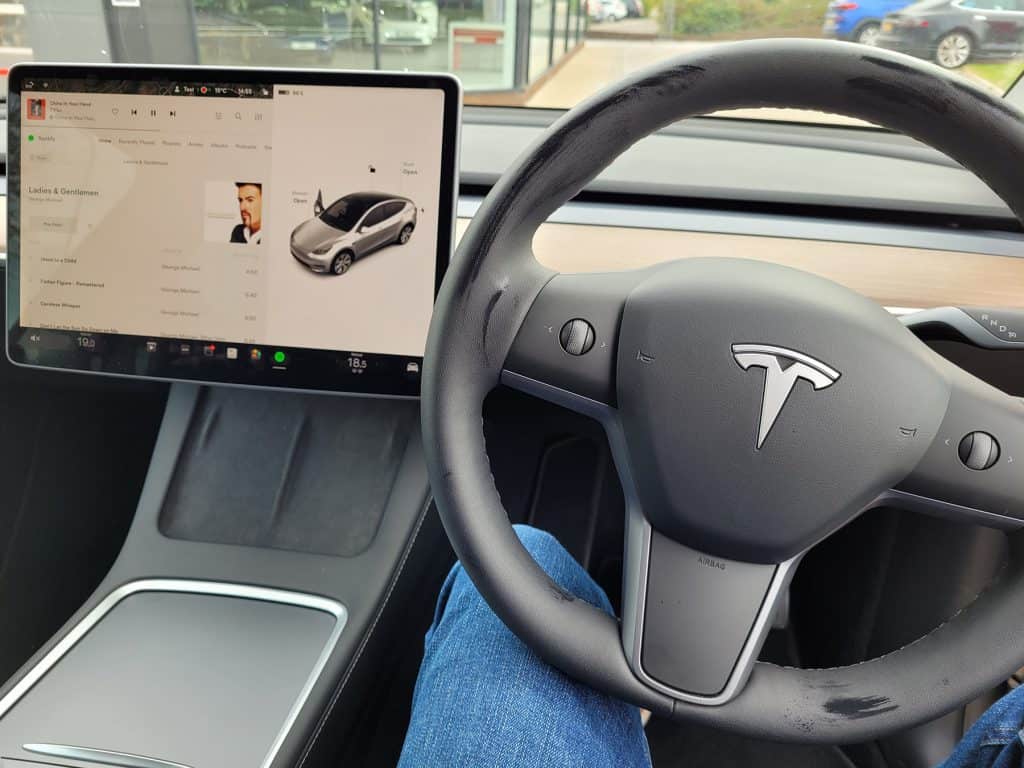
The top of the home screen on the Tesla central touchscreen will reveal a battery logo with the percentage of charge remaining. It looks much like you’d expect to see it on your smartphone or other digital device. If you’d prefer to see the number of remaining estimated miles in range, you can press on the car in the lower left corner and then go to Display > Energy Display and set it to display miles instead of percentage.
Chevrolet Bolt
If you inspect the left hand side of the Bolt instrument cluster, you’ll see a number in the middle with a green battery symbol. This is your predicted number of miles remaining. Above it is a maximum estimated range, and below it a minimum estimated range. This is meant to reflect the way that the numbers can change depending on temperature, driving style, and so on. The main number is an estimate based on an average.
Nissan Leaf
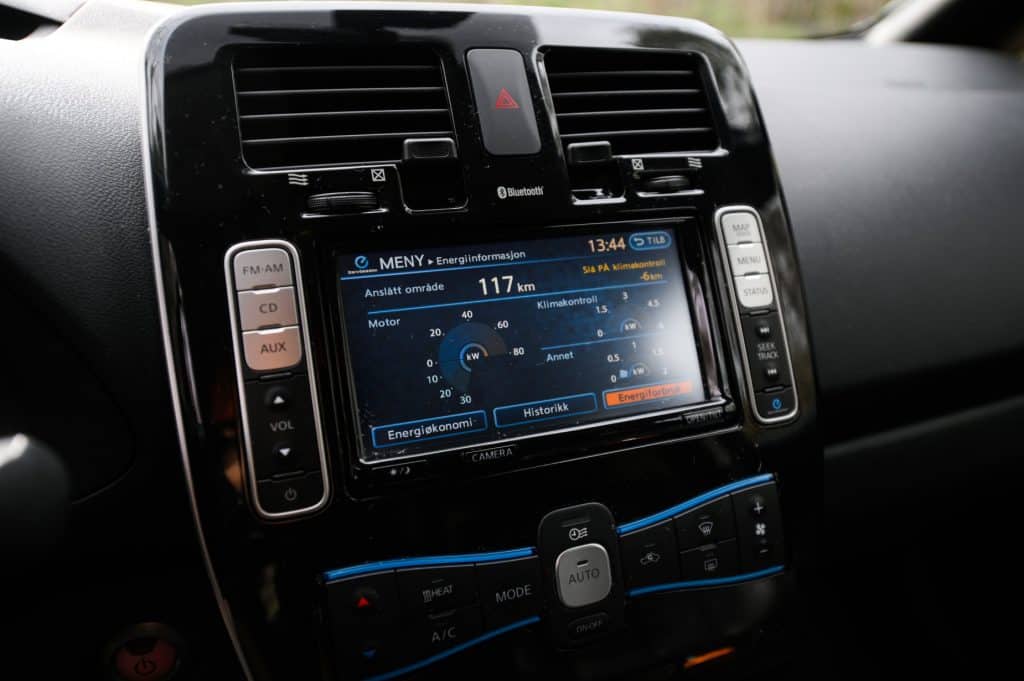
On the Nissan Leaf, there’s an information display on the instrument cluster. If you look at the left-hand section in the bottom line, you’ll see a battery percentage indicator, accompanied by an estimate of the number of miles remaining.
Mustang Mach-E
For Mustang Mach-E drivers, they can look on the left side of their instrument cluster to find the battery percentage indicator, where estimated remaining miles will also be indicated.
VW ID.4
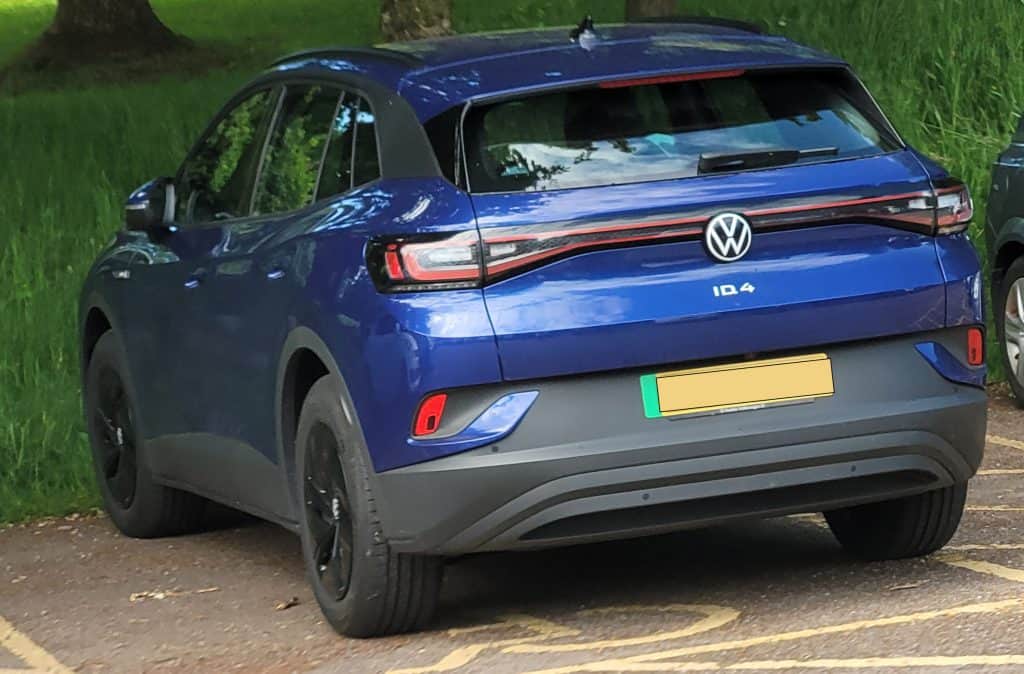
On the ID.4, if you look at the instrument display, you’ll see a battery indicator below the speed reading. It will tell you the number of miles or kilometers remaining depending on how it’s set up and where it’s driving. These numbers do not, however, appear on the augmented reality HUD display.
How to Recharge Your EV
Finally, and to wrap up today’s blog, let’s also look at how to restore range and how long that takes. This is important to understand because many of us are used to the idea that refueling our car just takes a quick 5-minute stop at a gas station to pump gas into the tank. With an EV, it’s not quite that simple. There are three levels of charging, each offering different things.
Level 1
This refers to the factory-issued charging cable that comes with your car that can plug into household outlets. These cables can only add in about 5 miles of range per hour, and are thus not so useful for battery electric vehicles (BEVs). They can be useful for plug-in hybrid models, however, which usually can’t use level 3 charging, and have smaller battery capacities. The benefit of charging very slowly is that it doesn’t negatively affect the battery chemistry.
Level 2
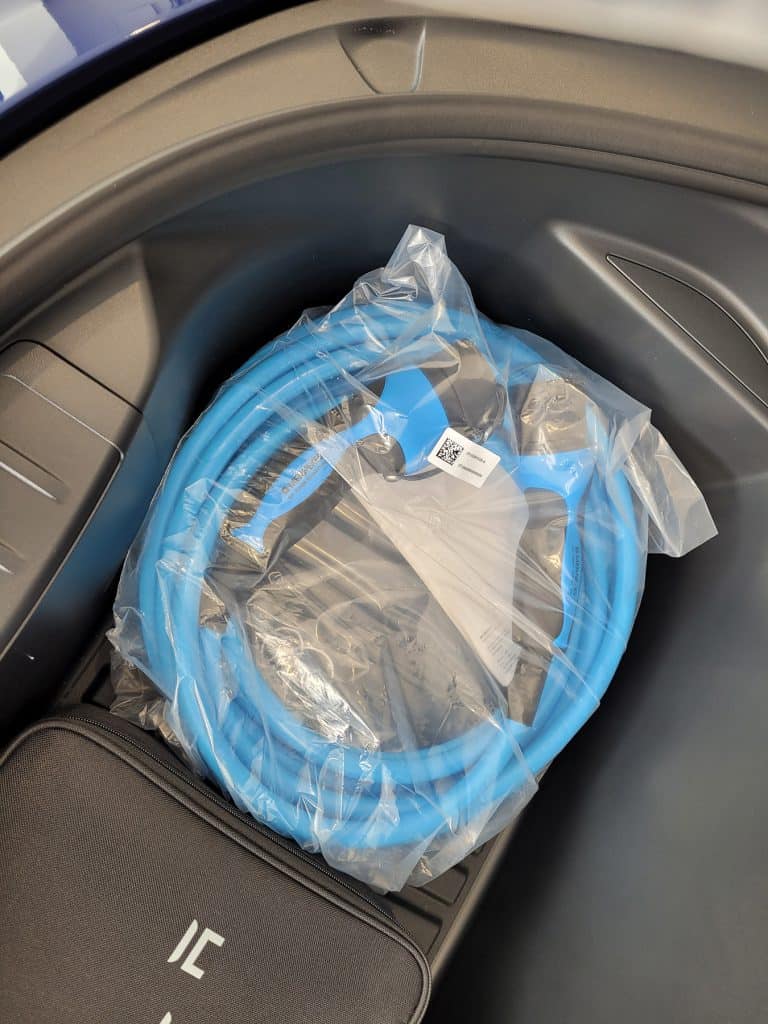
These chargers make up the majority of charging units out there both public and home stations. These are more powerful than level 1 cables, adding 25-40 miles per hour depending on the brand and power rating. They are ideal for charging the car overnight, whether you just want to charge to 80 percent to preserve the battery, or whether you want to charge to 100 percent before undertaking a long journey.
These units are powerful enough to make charging practical, while also not being too harsh on the battery or causing degradation.
Level 3
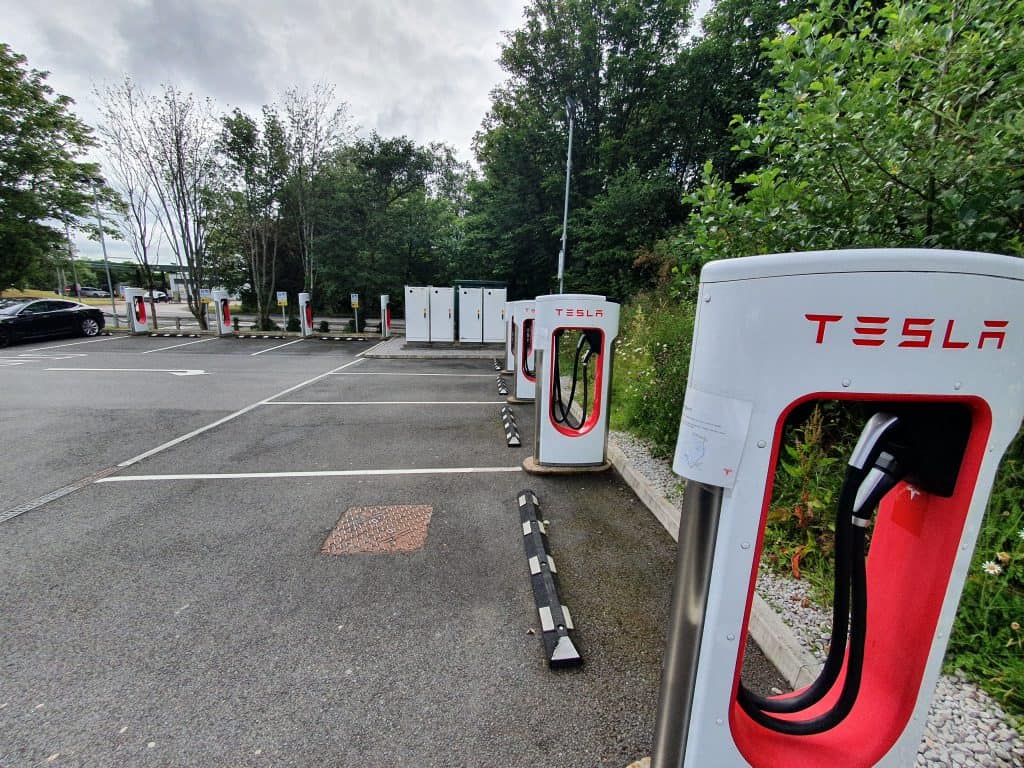
These are DC fast charging units that are incredibly efficient, with the trade-off that using them too often can negatively impact your battery health, upsetting its chemical balance and reducing its overall capacity in a short time.
They are extremely useful for those who are on long journeys and need to get back on the road fast, typically able to charge a car within the hour. Given their recommended use, you will most typically find them positioned on main highways.